Ecuador was the first place I went backpacking in South America.
As I flew into Quito airport with no return ticket, I felt nervously excited about what the country held in store for me – but luckily, Ecuador more than fulfilled my expectations.
Over the course of six months I lived and worked in the springtime city of Cuenca, partied in Montañita, boarded boats in the Galapagos and ventured deep into the Amazon jungle. I slept in palm-thatch huts on the beach, bathed in sacred volcanic water, and caught my breath in a mountain village high up in the Andes.
Ecuador was the perfect country to begin my eighteen months of backpacking adventures around South America, and I’d recommend it without hesitation to anyone else. So here’s a rundown of the best places to visit in Ecuador – a collection of all my experiences during five months of travelling this underrated country.
Pin me for later!
Quick links:
– Things to know about backpacking Ecuador –
Weather in Ecuador / Best time of year to visit Ecuador / Food in Ecuador / Safety in Ecuador / Travel insurance in Ecuador / Water sanitation in Ecuador / Speaking Spanish in Ecuador
– Travelling around Ecuador –
Transport in Ecuador / Bus routes in Ecuador / Hostels in Ecuador /
Entering & leaving Ecuador / Visas for Ecuador
– Where to go in Ecuador? –
Quito / Otavalo / Cuenca / Vilcabamba / Montañita / Guayaquil / Galapagos Islands / Baños / Tena / Misahualli / Salinas de Guaranda
Things to know about backpacking Ecuador
What’s the weather in Ecuador like?
As Ecuador is on the equator the temperature is similar all year round, but Ecuador is still somewhat seasonal: there’s a dry season from June to November, before moving into a rainy and humid season from December through to May.
Because part of the country is in the northern hemisphere and part is in the southern, this also means a pretty strong variation in climate. Ecuador is said to have four micro-climates:
– La Costa: the coastline is hot, humid and tropical, so expect sunbathing opportunities aplenty in Montañita, Salinas and Canoa.
– La Sierra: in the centre of the country is the cooler, high-altitude area of the Andes mountains. Expect warm days and chilly nights in cities like Quito, Loja, Cuenca and Baños.
– El Oriente: the Amazon rainforest and the low-lying land surrounding it has hot humid temperatures and regular (if light) rainfall in places like Tena, Misahualli and Puno.
– Galapagos Islands: You’d expect humidity, but the vast stretches of Pacific Ocean make the Galapagos Islands pleasantly cool! There’s very little rainfall and almost constant temperatures of 65-90’F/18-32’C.
When’s the best time of year to go backpacking in Ecuador?
Surprisingly enough, you might prefer to visit Ecuador’s beaches and coastline during the rainy season! Outside of this Dec-May period the weather can be muggy and overcast – but the rainy season actually means a short rainfall each afternoon, allowing for plenty of sunbathing.
Peak season for the Galapagos Islands is tied to school holidays: June through to September, and December/January will be heaving with crowds. Calmer seas and warmer temperatures are from December to May.
What’s traditional food in Ecuador like?
An introduction to Ecuadorian cuisine often starts with a scare tactic, as this is the country famed for serving up roasted guinea pig (known here as cuy). But there’s actually plenty of delicious food in Ecuador, with a particular focus on carb-rich dishes with potatoes, lentils and pasta, meat dishes like pork and chicken, and lots of fish on the coast – you just need to know what to ask for!
Cuy – fried or roasted guinea pig is considered a delicacy in Ecuador, and you’ll often see the creatures skewered over barbeques at markets. A whole cuy costs about $20 but you’re better off trying a quarter first, as it’s an acquired taste…! From my experience, there’s not much meat on a guinea pig, it tastes quite greasy and there’s a lot of little bones. Not my favourite Ecuadorian food, for sure.
Llapingachos – these small patties of grated potato, cheese and seasoning are mashed up and lightly fried. They’re an extremely popular street food snack.
Patacones – like most South American countries, Ecuador has a variant of sliced and fried green plantain. Learn to make patacones yourself if possible, as they taste the best when hot from the fryer.
Encebollado – this fish stew is most popular on the coast but is often regarded as Ecuador’s national dish. It’s usually made with tuna, and includes chunks of red cassava (a root veg) and pickled red onion rings, giving it a tangy flavour.
Hornado – slow roasted pork is a big thing in Ecuador, and there’s usually an entire upper floor dedicated to this dish in the market. For a few dollars you get a plate filled with the following: a hunk of pork, a helping of mote (corn kernels which have been boiled and peeled), as well as two or three llapingachos. Delicious!
Read more: Eating all the traditional food in Ecuador
Is backpacking Ecuador safe for solo travellers?
As long as you keep your wits around you, backpacking Ecuador isn’t particularly dangerous. However there’s a chance you’ll hear occasional reports of armed robbery: when I travelled across the border to Peru at night, we had to park the bus for hours to avoid a rumoured gang which was roaming on the Peruvian side. Quito also has a problem with mugging, particularly in the touristic centre, and during my months of living in Cuenca I had two friends who were robbed at the riverside by a man with a knife, and another guy had his bag stolen while he was asleep on the bus.
My advice? Keep your possessions close, practice common sense, and trust your gut. It’s also worth reconsidering your typical backpacker clothing, as those bright and baggy hippy trousers might mark you out as a gringo with foreign possessions worth mugging.
Read more: Forced to walk 100kms along the Ecuador-Peru border
Do I need travel insurance in Ecuador?
Yes, absolutely! You should have comprehensive travel insurance when backpacking Ecuador – or anywhere, for that matter. I usually use World Nomads as it’s designed for adventurous travellers.
Can I drink the water in Ecuador?
It’s not a good idea to drink the tap water anywhere in Ecuador – stick to bottled water instead, or make sure you sterilise it first by boiling or using a Steri-Pen.
Do I need to speak Spanish in Ecuador?
When I arrived in Ecuador I had beginner’s level Spanish, and I managed to get around fine – but I was living with a host family who spoke fantastic English and had a group of English friends who were better at Spanish than me, so I didn’t practice nearly enough!
I’d still recommend having some basic Spanish before backpacking Ecuador – it’s just common sense. Moreover, there are plenty of Spanish schools throughout the country for you to brush up your skills.
I spent 18 months learning Spanish in South America. Read my ‘Spanish Challenge’ series here!
Travelling around Ecuador
What kind of transport can I take in Ecuador?
Air travel
Ecuador has two international airports in Quito and Guayaquil, and it’s a popular country to begin your South American travels from. It’s pretty common for tourists to book internal flights in Ecuador, as the only way to reach the Galapagos Islands is via plane. Flights to the islands will depart from both Quito and Guayaquil but the latter coastal city is closer (and most flights from Quito will stop over in Guayaquil anyway!).
Bus travel
As one of the smallest countries in South America, backpacking Ecuador via bus is easy and you won’t spend full 24 hour stretches on board. There are bus stations in every major city and plenty of smaller towns: usually called ‘Terminal Terrestre’, this is where the long-distance buses will stop.
The general rule for bus fare in Ecuador is $1 per hour, but it’s always worth checking prices at a few different vendors before you buy a ticket.
- Quito to Otavalo: $2.50 for a 2 hour journey. Buses leave from Quito’s ‘Terminal Carcelen’ bus station.
- Quito to Guayaquil: $8 for 8 hours.
- Quito to Cuenca: $10 for 9.5 hours.
- Cuenca to Vilcabamba: 6 hour bus to Loja then switch to a second local bus for 45 mins.
- Cuenca to Guayaquil: $8 for 4 hours. Buses depart every hour and the route goes through Cajas National Park so you’ll have some good views.
- Cuenca to Montañita: No direct bus route, but it’s possible via Guayaquil and takes about 9 hours.
- Cuenca to Baños: $8 for an 8 hour journey. Buses leave three times daily.
- Baños to Tena: $7 for 7 hours. Buses depart every few hours from the small bus terminal in the centre of town.
- Tena to Misahualli: $1 for a 1 hour journey on a local bus.
- Riobamba to Salinas de Guaranda: $1 for a 1.5 hour journey, then catch a local bus for the 45 min ride to Salinas de Guaranda (or hitchhike with the local farmers!)
Read more: A guide to dealing with bus travel in South America
Tips for bus travel in Ecuador:
– Buy your bus tickets at bus stations. Trying to decipher the online booking systems is nearly impossible and besides, you might get turned away with a blank stare unless you do it in person. Also this is the prime time to haggle and question the various company operators.
– Aim for daytime journeys. Although it’s possible to take buses at night to maximise your days of exploring, there are enough cautionary tales about accidents caused by drunk and overtired drivers to warrant a daytime journey – not to mention stories of nighttime muggings and bus hijackings. Plus on a long travel day it’s worth having the scenery to stare out at (unless, like me, you have a strong fear of heights when driving the winding mountain roads!)
– Watch out for pickpockets! Most South America mugging stories I heard seem to all happen in Ecuador, and I also had my own pickpocketing/mugging experience on a bus from Ecuador to Colombia. Put the bulk of your luggage in the hold under the bus but make sure it’s securely closed and don’t include any valuables in there. Keep these in a little pack which you keep on you at all times: don’t put it in the rack above your seat or on the floor beside your feet either.
Read more: The time I was mugged for my snacks on an Ecuador bus
Where should I stay in Ecuador?
Hostels in Ecuador are plentiful and their prices are reasonable – so it’s a popular choice for a backpacker. Googling for Ecuador hostels will undoubtedly provide a ton of results, so I’ve included a list of my favourites below.
If you’re looking for something a bit more upmarket, the Ecuador hotel scene is booming too. There’s also much to be said for Airbnb – sign up here and get £25 off your first booking!
Check Prices of Ecuador Hostels Here!
Hostels in Ecuador
| Location | Hostel | Why stay here? |
| Quito | Hostal Revolucion | Small, cosy hostel in the historical centre of Quito. Perks include a big kitchen, lots of showers and real pillows! |
| Otavalo Market | El Andariego | A block away from Otavalo market, this hostel has an onsite restaurant, sun-soaked roof terrace, and lovely colourful furnishings. |
| Cuenca | AlterNative Hostel | Bright, modern and relaxed hostel, close to Cuenca’s bars and restaurants and with great facilities. |
| Vilcabamba | Le Rendez-Vous Hostal | Set in a beautiful garden yet only a few blocks from Vilcabamba’s central plaza, this serene hostel serves the best included breakfast I’ve ever had! |
| Montañita | My Little House Surf & Backpacker Hostel | A small hostel close to the beach with the perfect combination of party vibes in a chilled out environment – plus a really friendly owner! |
| Guayaquil | Dreamkapture Hostel | Great for an overnight stay before a Galapagos flight, as it’s close to the public bus station & the airport. There’s a kitchen, hot showers & lots of little hangout spots. |
| Galapagos Islands | Hostal Puerto Ayora | Close to the water, this no-frills hostel is clean with hot water, relatively good wifi and a guest kitchen. |
| Baños | Erupcion Art Hotel & Hostel | Dorms are decorated with local art, they host family dinners every week, and are really helpful with organising tours in the local area. |
| Tena | Hostal Pakay | A lovely eco-friendly hostel set in two hectares of jungle gardens on the outskirts of Tena. Hammocks, dry toilets, and a delicious breakfast served up by the couple built the hostel. They’ll happily organise Amazon jungle tours here, too. |
| Misahualli | Albergue Español & Ceibo Lodge | This jungle lodge is close to the Napo river with a delicious breakfast and friendly staff. |
| Salinas de Guaranda | La Minga Hostal | A friendly little family-run place with a pizza oven downstairs and a balcony overlooking the main square. There’s no heating in the building so all the blankets on our bed were gratefully received! |
How do I get in and out of Ecuador?
– Flights: As mentioned above, you can fly into Ecuador at the international airports in either Quito or Guayaquil. I arrived into Ecuador at Quito’s ‘Mariscal Sucre International Airport’ (UIO), one of the continent’s busiest airports, and also used Guayaquil’s ‘José Joaquín de Olmedo International Airport’ (GYE) when I flew to the Galapagos – and if you’re planning to sleep at the latter before your own trip to the Galapagos, you should check out this article. Both airports are easy to navigate and open 24 hours with lots of cafes, restaurants, lounges, good wifi and amenities.
– Border crossings: Ecuador shares overland borders with Colombia to the north and Peru to the east and the south. I crossed these borders a number of times, and can say without a doubt that my overnight crossings were more dramatic and difficult than the daytime ones!
There are two crossings with each country, so four in total:
- To/from Colombia: the most common crossing is from Tulcan in Ecuador to Ipiales in Colombia. Take a bus from Quito (approx 5 hours) to the actual crossing at Rumichaca bridge, then travel onwards from Ipiales to Pasto (2 hours) or Popayan (7 hours) in Colombia.
- To/from Peru: the recommended crossing is from Huaquillas in Ecuador to Aguas Verdes in Peru – this takes you onwards to Mancora on the Peruvian coast. This article has more in-depth info.
What visa do I need for Ecuador?
Ecuador’s visa policy is extremely lenient, and most nationalities can obtain a 90 day visa on arrival in the country (check the countries exempt from this rule here).
Because I was volunteering in Ecuador through an organisation, I had to visit the Ecuadorian embassy in London to get an extended six month visa. When I arrived at Quito’s airport I was successfully stamped in, but later I had to head to the passport office in Guayaquil because they spelt my middle name wrong on the form…!
I’d recommend checking your country’s individual visa policy for Ecuador – it’s usually on their embassy website. .
Where to go on your Ecuador backpacking adventure!
Get to grips with Ecuador’s capital of Quito
At an altitude of over 2,800 metres, Quito is one of the highest capital cities in the world – but that’s not the only special thing about this city. Quito is home to ‘El Mitad del Mundo’, the equator line marking the middle of the world and dividing the north and south hemispheres (hence where Ecuador gets its name).
Quito’s altitude makes exploring this city a somewhat breathless experience. It’s a busy and bustling place with plenty to keep you occupied, from stunning colonial architecture and dozens of museums to an energetic nightlife in the La Mariscal neighbourhood.
What to do in Quito, Ecuador
Visit the middle of the world at Mitad del Mundo. The first stop in Quito for many tourists is the monument and various activities at the equator line. It’s actually an hour away from the city centre but there’s lots to do here: experiment with balancing an egg on a nail (harder than it sounds!), watch water drain in two directions and take the obligatory photo of your feet on either side of the famous line. The Mitad del Mundo is definitely a tourist-focused destination but it’s fun nonetheless.
Explore Quito’s historic Old Town. The historical centre is filled with well-preserved colonial architecture dating back to the 16th century, making it a lovely area to wander through. You’ll also come across theatres, museums, galleries, cultural centers and many, many churches. Make sure to stop in Plaza Grande, the city’s main square, too: on Monday mornings there’s a 30 minute ‘changing of the guard’ ceremony complete with music and an appearance from the President!
Ride the Teleferico. Quito has the world’s second highest cable car (the highest is in La Paz, Bolivia) and it’s definitely worth the $8 ticket fee. You’ll rise almost 14,000 feet above sea level and have an uninterrupted view across the entire city towards the volcanos in the distance.
Visit La Virgen del Panecillo, the angel on the hill. This stone monument of the Madonna was built in 1973 by a Spanish artist and stands at 45 metres tall – although the wings make her look bigger. The angel is visible throughout Quito and is another good spot to look out across the city. There’s a staircase leading up to El Panecillo but numerous reports of muggings (not to mention the altitude!) indicate a taxi is a safer option.
Hang out in Plaza Foch. If you’re in Quito to party, spend some time in Plaza Foche: it’s right in the heart of La Mariscal district and is full of restaurants, bars, clubs and impromptu street parties. This part of Quito is as touristy as you’d expect but can still be a lot of fun!
Read more: a Quito homestay with our adopted Ecuadorian grandparents
Go shopping in Otavalo Market
The little town of Otavalo hosts the largest indigenous market in South America. Each weekend, the streets explode with stalls featuring clothes, artwork, jewellery, musical instruments and patterned blankets made by artisans from all over the country.
Otavalo market is only a few hours away from Quito so it’s easy to visit as a day trip, but there are also enough activities in the surrounding area to warrant spending a few days there too.
What to do in Otavalo, Ecuador
Get lost in the market. There’s a certain joy in losing your sense of direction amongst labyrinthine street stalls – and Otavalo is the perfect place to do it. You’ll befriend someone selling embroidered blankets, haggle furiously over a leather bag you suddenly need to have, and kit yourself out in the standard South America backpacker outfit of colourful pants and alpaca jumper. Remember to take cash, as this is an informal market and it’s unlikely that card payments will be accepted.
Ship your purchases home. If you end up with too many souvenirs, there’s a correo office on a side street close to the market where you can send packages back home. Just be aware that international shipping costs might exceed the amount you spent in the first place!
People-watch. Otavalo market is an excellent place to start appreciating the nuances of Ecuadorian culture. Although it’s a popular tourist haunt, hundreds of Quechua people also shop at the market, so you’ll see plenty of families, children and elderly couples in traditional outfits with long plaited hair. Listen out for the differences in Quechua dialect to Spanish too.
Living Otavalo Museum. Housed in what used to be a textile factory where people worked in conditions akin to slave labour, this museum has a series of exhibits explaining daily life in the region over the years as well as live weaving demonstrations. A visit here provides much-needed context for the history of this area for generations of local Ecuadorians.
Walk to the Peguche waterfall. Located in an indigenous reserve, this stunning waterfall is a 45 minute walk from the town – either along the railway track or via taxi if you’re short on time.
Visit the Otavalo Condor Park. Here you’ll find a number of predatory birds of different species including hawks, eagles and Andean condors. The birds have either been rescued or are recovering from injury, and the park is both a rehabilitation centre and an informative space for visitors to learn more about these birds – which culminates in a raptor display twice a day. The Condor Park closed on Monday and Tuesday, so plan ahead!
Find Your Otavalo Hostel Here!
Read more: Meet traditional witches at South America’s largest market
Slow down in sunny Cuenca
With constant spring temperatures, bright sunshine (although you’ve got to carry an umbrella) and gorgeous colonial architecture, the White City of Cuenca is one of my favourite places to visit in South America. Then again, I’m biased – I lived with a host family here for five months while volunteering as an English teacher.
But don’t just take my word for it! Cuenca has repeatedly hit the top ten places to retire to (according to Forbes), so it’s become popular with American expats, volunteers and travellers alike. It’s a relaxed city with plenty to keep you occupied, and its status as a UNESCO World Heritage Site makes it a beautiful place to wander aimlessly in too.
Read more: Coping with Cuenca’s curious weather
What to do in Cuenca, Ecuador
Visit Cuenca’s famous cathedral. Cuenca’s crowning glory is ‘La Catedral de la Inmaculada Concepcion de Cuenca’, a stunning cathedral which dates back to 1885 and features stained glass windows, an intricate altar and a famous crowned image of Virgin Mary. You can see the cathedral’s bright blue domes from all around the city – or climb up the steep spiral staircase for views across the rooftops.
People-watch in Parque Calderon. This central plaza is a perfect place to chill out: there’s street performers, children playing, elderly Ecuadorian men chatting on benches, and a generally wholesome and happy vibe. Another good spot for watching the world go by is at the flower market on Calle Sucre, just outside the cathedral.
Walk along the Rio Tomebamba. This river runs through the centre of Cuenca and has plenty of bridges and paved trails on each side. At one point the trail is flanked by the Barranco, a collection of beautiful buildings which appear to hang above the river.
Visit the Panama Hat Factory. It’s a little-known fact that Panama hats were actually invented in Ecuador – and the town of Chordeleg, close to Cuenca, is one of the main sources of Panama hat production. In Cuenca itself you can visit a factory which has made these hats since 1942, see life-size display models hard at work, and look at the tools used in hat-making.
See the view from Mirador de Turi. On a hill just outside the city sits a church with stunning views across Cuenca, and there’s a few touristy stalls and street food on offer up here too. Reach the mirador via a taxi or bus ride (the double-decker tour bus makes a stop here), or take the more challenging option of climbing a long flight of stairs.
Explore ancient ruins at Ingapirca. These Inca ruins are some of the largest in Ecuador (and a UNESCO World Heritage Site, too), but because they’re not too well known they aren’t overrun with tourists like in Peru’s Machu Picchu. Ingapirca is an easy day trip from Cuenca.
Spend the day in Cajas National Park. An hour away from Cuenca is a rich and varied landscape of forests, mountains, dozens of trails and over 700 lakes known as the Cajas National Park. It’s recommended to visit this huge park with a guide, as many of the trails aren’t well-marked and the cloud cover which descends each afternoon can make it hard to see.
Choose Your Cuenca Hostel Here!
Read more: Spending a hungover day with cowboys at the Cuenca rodeo
Live the simple life in Vilcabamba
The beautiful little town of Vilcabamba wasn’t on the backpacking radar until the 1970s when the world heard that residents had extremely long lifespans (up to the age of 130!). People started flocking to ‘The Valley of Longevity’ and now it’s a popular place for expats and travellers alike.
We took a weekend trip from Cuenca down to Vilcabamba and spent our time riding horses, chilling in the main square and inadvertently trekking through the dark to crash an Ecuadorian wedding party in a marquee. As you do.
What to do in Vilcabamba, Ecuador
Go horse riding through the valley. Vilcabamba gives off the impression of a cowboy town: there are horses everywhere, either trotting through the streets or waiting patiently for their riders. We spent an afternoon ambling through the valley on horseback, and despite not being a confident rider I still really enjoyed myself!
Explore the scenery on foot. Vilcabamba is close to Podocarpus National Park, a unique area which serves as a meeting point for Ecuador’s four different micro-climates. There are plenty of hiking trails in the park (including one to Cascada El Palto waterfalls which has stunning views of the valley), but you can just as easily start walking on any dirt tracks leading out of Vilcabamba itself. For those keen on something more challenging, there’s a more difficult hike up Cerro Mandango, a nearby mountain.
Relax at a chilled-out hostel. Lie back in a hammock, soak up the Andean sun, and enjoy the peace and quiet at one of Vilcabamba’s best places to stay. I loved Le Rendez-Vous Hostal: the twisting paths through gorgeous walled gardens makes it feel like your own personal sanctuary, and they served up the best hostel breakfast I’ve ever had! Pancakes, anyone?
Hang out in town. One of the best aspects of Vilcabamba is that despite its popularity it still doesn’t feel overcrowded, and the locals (both foreign and Ecuadorian) are friendly and eager to chat. There are lots of cafes and bars, and you’ll spot the same faces congregating at the outdoor tables – an easy way to make friends!
Find Your Vilcabamba Hostel Here!
Catch some waves in Montañita
Once a destination mainly favoured by budget backpackers, this stretch of Ecuador’s coastline has grown increasingly popular thanks to its beaches and surf opportunities.
Local Ecuadorians flock to Montañita each weekend so there are lots of parties and a definite increase in crowds, but this little town still maintains a chill vibe during the week: yoga classes, little shacks selling smoothies, and massages advertised just steps away from the beach. We visited Montañita during Semana Santa (Easter), so it was more raucous than usual!
Read more: How to celebrate Easter in Montañita
What to do in Montañita, Ecuador
Learn to surf. The beaches in and around Montañita are well known for their good surf – either take classes at one of the surf schools, or rent a board for $4 an hour.
Take Spanish lessons. Wherever backpackers congregate, there’s bound to be a language school, and Montañita has a good selection of places to study Spanish.
Treat yourself! There are lots of health and wellness activities on offer in Montanita: choose from massages, yoga classes, dance studios, and reiki courses, and properly relax into the beachside life.
Take a boat to Isla de la Plata. This small island is just off the coast is part of Parque Nacional Machalilla and takes an hour to reach. Sometimes called ‘The Poor Man’s Galapagos’, it’s a budget-friendly alternative to the famous islands. On Isla de la Plata you’ll see marine birds like blue-footed boobies and albatrosses, go hiking across the island and snorkel amongst the rich marine life. You can also head here from Puerto Lopez.
Walk along Cocktail Alley. If you’re in Montañita for the party scene, this central strip is the place to spend your evening. There are stands cooking up street food, little pop-up cocktail stalls, and plenty of hawkers selling hair braids, handmade jewellery and crafts made from tagua, a type of ‘vegetable ivory’ carved from palm tree seeds.
Choose Your Montañita Hostel Here!
Catch a sea breeze in Guayaquil
Guayaquil is Ecuador’s most well known port town. Founded in 1500s to ward off pirates, it isn’t actually beside the sea – instead, it sits on the west bank of the Guaya River – but the city’s location provides a protected route to the Pacific Ocean 40 miles away.
Nowadays many visitors use Guayaquil primarily as a jumping off point for the Galapagos – but there’s a lot to see and do here. It’s a big city with beautiful parks and architecture, archeological and anthropological museums, shops and restaurants, and plenty of expats and students who call Guayaquil home.
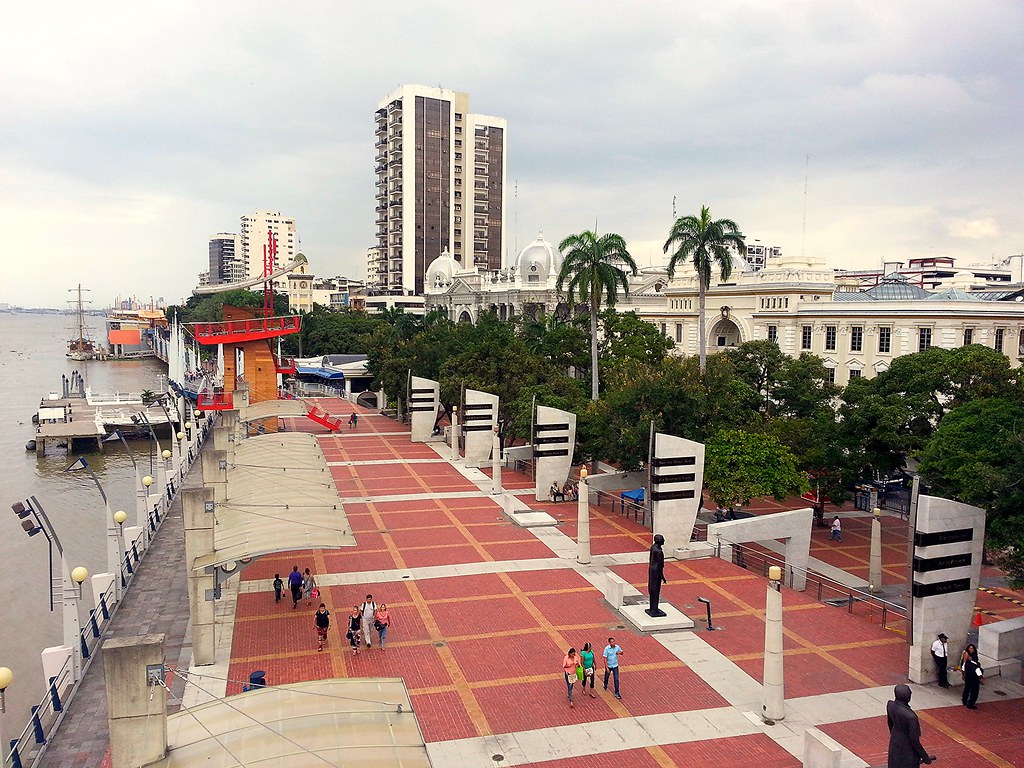
[Image: VV Nincic]
What to do in Guayaquil, Ecuador
Walk along the Malecon Simon Bolivar. This boardwalk beside the river stretches for over a mile. Along the way you’ll pass shops, museums, galleries, manicured gardens, playgrounds, a planetarium and even a ferris wheel! Each evening, the Malecon becomes the place to be as the city’s inhabitants stroll, chat and generally hang out.
Climb the stairs to the Guayaquil lighthouse. At the summit of 440 steps, you’ll reach a 360′ viewpoint above Guayaquil with a blue and white striped lighthouse and a little chapel. There are vendors selling water, snacks and ice cream along the route, and it’s altogether a lovely spot to see the city from.
Explore the historic barrio of Las Penas. This is the original neighbourhood of Guayaquil, but the historical buildings have been rebuilt and painted in bright colours. Walking up to the lighthouse takes you through Las Penas but it’s worth spending some time here too!
Visit the Botanical Gardens. Ecuador has a huge variety of orchids, and there are plenty on display here (although they bloom at specific times throughout the year). This is a beautifully tranquil place to relax and soak up some nature.
Head to Parque Historico. This fascinating park explains Guayaquil’s history in three distinct areas: traditional, wildlife, and urban architecture. There are lots of examples of how Guayaquil used to look in the early 20th century, along with live theatrical performances and ten acres of natural habitat for fifty species of wildlife.
Find Your Guayaquil Hostel Here!
Discover another world in the Galapagos Islands
When Charles Darwin visited the Galapagos Islands in 1835, his studies of the variations in bird species from island to island eventually led him to develop his infamous Theory of Evolution. People assume visiting the Galapagos all about seeing the wildlife – but the diverse scenery is fascinating too; dark volcanic rocks, white sand beaches, bright red lakes, tangled jungle, muggy swampland… the list goes on.
You might not think it’s possible to add the Galapagos to your backpacking Ecuador itinerary, but I beg to differ! I visited the Galapagos twice – once on a extreme budgeting trip (spending just $900 in six days), and a second time for a last-minute cruise. There’s so much to say about the Galapagos that writing a brief summary is difficult: luckily I’ve also written a budget guide to exploring the islands and a few articles about the day trips and three day cruise I took there.
Read more: How to travel the Galapagos Islands on a budget
What to do in the Galapagos, Ecuador
This volcanic archipelago has thirteen major islands and over a hundred smaller ones. The major islands have their own entry/exit points and limitations on the number of visitors – as over 220,000 people come to the Galapagos each year!
Some of the islands you might want to explore are as follows:
– Santa Cruz Island. This is where most budgeting backpackers base themselves, as the town of Puerto Ayora is the main touristic hub for the Galapagos. Here you can organise day trips and last minute cruises with dozens of tour operators, but the island itself has a lot to offer too: the Charles Darwin Research Station has a breeding program for giant tortoises, Tortuga Bay is a gorgeous spot for swimming, and the lava tunnels are a fascinating place to explore.
– San Cristobal Island. The easternmost island in the archipelago is famous for Leon Dormido, or ‘Kicker Rock’. This dramatic sheer-walled rock, rising 500 feet from the sea, is where hundreds of frigate birds and blue-footed boobies congregate – and where, beneath the water, schools of fish, sea turtles, manta rays and hammerhead sharks swim, making it a popular spot for snorkelling and diving. On the island itself there’s a hike to Cerro Tijeretas or ‘Frigate bird hill’ for spectacular views, and a white coral beach called Cerro Brujo where you can swim with sealions.
– Floreana Island. This is one of the few islands where locals make a living from farming. The sunken volcanic crater known as Devil’s Crown has great snorkelling, although currents can be rough here, and Cormorant Bay has the best flamingo lagoon in the archipelago. Floreana Island is also home to Post Office Bay, where 18th century sailors used to leave their letters in a barrel with the hope that a passing ship would be heading in the address’s direction.
– Española Island. The southernmost island has the highest rate of endemic species in the Galapagos; its home to thousands of waved albatross from April to December, and also the Galapagos hawk, tons of Blue footed boobies and the famous finches.
– Santiago Island. The fourth largest Galapagos island has sunbathing sea lions at the Puerto Egas beach, and marine iguanas feeding on green algae at low tide. Just off the coast is Sombrero Chino, a volcanic cone made from lava formations, which is home to a colony of sea lions.
Read more: What it’s like to take a last minute Galapagos cruise
How to see the Galapagos islands – day trips or a cruise?
I think most travellers assume that visiting the Galapagos means you have to take an expensive cruise, but you can actually see a fair amount of the archipelago via day tours alone. Bear in mind that cruises allow you to venture farther afield, letting you visit islands which day tours can’t reach.
If you’re hoping to see something specific (be it landscape or species) then a cruise is probably your best option. However, if you’re just after a general Galapagos experience then definitely consider single-day boat trips instead.
Meet the local wildlife. There are hundreds of different species that call the Galapagos home. Some of the favourites inculde marine iguanas, SallyLightfoot crabs, blue-footed boobies, Galapagos penguins (endemic to the islands) playful sea lions and schools of sharks.
Go snorkelling and scuba diving. The underwater world of the Galapagos is so plentiful that simply donning a snorkel and swimming in the shallows can be enough to see manta rays, huge turtles, sealions, sharks and a diverse array of fish. There are also specific places renowned for particular marine life: for instance, if you take a day trip past Leon Dormido (also known as Kicker Rock) you could encounter a school of sharks! If you go scuba diving you’re upping your chances of great viewing, although most of the Galapagos is suited to experienced divers.
Try hiking and biking. If you choose to stay on Santa Cruz then there’s plenty of opportunities for soft adventure sports: kayaking, biking, SUP, and hiking to name just a few.
Read more: Snorkelling with sharks and sealions in the Galapagos
How do I fly in and out of the Galapagos?
There are three airlines flying to the Galápagos Islands: Tame, Avianca and LAN. They all operate two two morning flights each day, departing from Quito via Guayaquil and landing at Isla Baltra Airport. From there, it’s an hour to the island’s main town of Puerto Ayora via public transport.
Choose Your Galapagos Islands Hostel Here!
Go adventuring in Baños de Agua Santa
Baños is most well-known for the famous natural hot springs it’s named after – but this little town is also Ecuador’s adventure capital. Over the course of a few days, you can set your heart racing with outdoor sports like abseiling, zip-lining, kayaking, bungee jumping, paragliding, cycling, hiking and more.
What to do in Baños, Ecuador
Soak at the public open-air thermal baths. Many Ecuadorians believe that the thermal waters of Baños have healing properties – but even if you don’t share that belief, there’s no denying how pleasant it is to soak in a pool heated by a volcano five miles away. The thermal baths are a popular place for people to hang out, chat and let their muscles unwind, and there are a few different thermal baths around the town with differing temperatures, rules, prices and states of cleanliness – check out this guide to find one you like.
Take a hike. There are lots of hiking routes ranging in difficulty in the valleys surrounding Baños. Ask in the tourist office in the centre of town for maps and directions.
Go abseiling down waterfalls. You’ll be fitted with a wetsuit, helmet, shoes and harness, then drive a little way out of town to various cliffs and waterfalls. Your guide will help coach you through the descent – and there might be some ziplining involved too!
Swing at La Casa de Arbol. Commonly known as ‘The Swing At The End Of The World’, this Instagram-famous spot will probably require a queue – but eventually you can swing out above the treetops for a truly unique view of the surrounding landscape. The treehouse this swing is attached to actually operates as a seismic monitoring station, so I’m guessing a bored scientist decided to build themselves a swing?! Just don’t forget to fasten the seatbelt (seriously!) first.
Buy some hand-stretched melcocha candy. The traditional sweet known as melcocha is sold all over Ecuador, but the one made in Baños is particularly famous. This thick, taffy-like sweet made from sugarcane is stretched out over a wooden hook by melcocheros, who hand-pull the melcocha until it hardens. It requires a fair amount of muscle which makes the process itself pretty cool to watch – head for the sweet shops opposite the bus station in the main square to see the melcocheros at work and to buy some for yourself!
Explore the Amazon jungle in Tena
The Amazon jungle stretches across nine countries in South America and most people head for Brazil or Peru to explore it. However, Ecuador’s little slice of the rainforest is just as adventurous – and there aren’t so many tourists clamouring for a taste.
The city of Tena is Ecuador’s new up-and-coming adventure spot: either for heading into the jungle or kayaking and rafting on the nearby rivers.
What to do in Tena, Ecuador
Explore the Amazon jungle on foot. Wandering through the Amazon jungle with a local guide is an experience like no other. You’ll see the medicinal plants people have been using for centuries, learn about traditions and customs and gaze up at ancient trees, all the while pushing your way through dense vines – so don’t be surprised if your guide has a machete on hand to hack out a path.
Harvest jungle fruits. A great part of an Amazon jungle tour is meeting the people who farm and harvest foodstuffs like pineapples, yuca, and bananas. Try your hand at picking pineapples,make chocolate from freshly roasted cacao seeds, and learn how to carry a basket on your head while collecting yuca.
Go whitewater rafting, kayaking and tubing. Tena is world-famous for its whitewater rafting opportunities (The World Rafting Championships were even held here in 2005) and there’s lots of opportunities to go kayaking too. All these trips can be organised via tour operators in Tena city centre. If you don’t fancy a multi-day trip then there are afternoon trips – or just grab an inflated inner tube and go tubing!
Head deep into the Jumandi caves. This network of caves is where local Ecuadorians hid to escape the Spanish invaders in the 16th century. You’ll need a knowledgeable guide to explore the stalactites, underground streams and even an underground waterfall which are hidden inside.
Go for a night walk in the Amazon. The sights and sounds of the Amazon jungle change drastically at night. If you can, take a tour which offers a night walk: you’ll see spiders, frogs, moths and bats, hear the mating calls of cicadas and iguanas, and look up through the pitch black to a sky glittering with stars.
Stay at an eco-friendly hostel. One of my favourite hostels in the whole of Ecuador was Hostal Pakay — an eco-conscious place just outside Tena with expansive gardens, composting toilets, and really friendly owners (who helped us rid our dorm room of a tarantula by chasing it with a machete!)
Read more: Modern day life for the locals of the Amazon jungle
Bargain with monkeys in Misahualli
This sleepy little town is the gateway to Ecuador’s Amazon jungle, and the perfect place to get an idea of what local life in the jungle is really like.
What to do in Misahualli, Ecuador
Meet the monkeys. The main plaza in Misahualli (also the town’s bus station) is filled with a troop of capuchin monkeys who swing from overhanging trees and steal phones, food and water bottles from unsuspecting passersby. Keep an eye out!
Visit the butterfly house. Run by a local man named Pepe, the Misahualli butterfly house is where dozens of local species develop from eggs to caterpillars and finally to full-grown butterflies. Pepe is really proud of his creation and conducts tours for a few dollars, explaining how he collects specimens and showing you his favourite butterflies.
Ride a canoe to the AmazoOnico Animal Rescue Centre. Along the Napo River is a volunteer-run animal centre which rehabilitates injured and rescued animals. I wasn’t particularly keen on some of the cages, but it’s clear that the volunteers care deeply about the animals here.
Go swimming in the river. Misahualli sits between two major rivers, the Rio Napo and the Rio Misahualli, and the riverbank looks suspiciously like a beach. It’s easy to spend an afternoon paddling in the shallows and diving from the rocks at the river’s widest point – the water can get pretty deep!
Choose Your Misahualli Hostel Here!
Read more: A guide to Misahualli, Ecuador’s gateway to the Amazon
Learn about local enterprise in Salinas de Guaranda
Last on the list is the tiny village of Salinas de Guaranda in the Andes mountains – originally known for its salt mines but famous today for running hundreds of locally-run small businesses in a dozen different industries. In the 1970s an Italian missionary helped the locals to establish the first co-operative, and the idea quickly grew: now the village produces cured meats, cheese, chocolate, clothing, dried mushrooms, marmalade, footballs and much more.
I spent a few days in Salinas de Guaranda and adored this chilly, community-focused place. It’s all the more fascinating because of how few tourists there are – but despite their lack of tourism, locals are friendly, welcoming, and more than happy to show you around their intriguing home.
What to do in Salinas de Guaranda, Ecuador
Apart from touring the unique co-operatives, Salinas de Guaranda is a place you’d visit for a taste of the simple village life in Ecuador. It’s pretty isolated and the mountain climate means low clouds, afternoon rains and damp, chilly nights: spend your time walking the hills around the village, chatting to locals and not much else!
There are dozens of co-operatives in Salinas de Guaranda, but these are some of the ones I visited:
El Salinerito cheese factory – almost 90% of the population work at this factory on the hill just outside Salinas de Guaranda and the ‘El Salinerito’ cheese is now sold all over Ecuador.
Dolomiti, the sausage making cooperative – what looks like a typical delicatessen also has a downstairs room filled with rows of dried sausages hanging from the ceiling rafters.
The football-making factory – a one-room factory filled with rows of tables and cardboard boxes, where a group of workers make hundreds of footballs a week.
The essential oils factory – where natural oils are extracted from local plants like chamomile, mint and pine, then worked into products like soap, shampoo and massage oils.
The wool factory – one of the most toured places in Salinas, this is where factory workers spend the day sorting huge bales of wool before taking them to be spun and dyed.
Confites El Salinerito chocolate factory – here we drank hot chocolate, tried yoghurt made from soy beans, and tasted Swiss-inspired chocolate flavoured with the famous salt from the local mines.
Artesalinas knitting co-operative – this all-female knitting cooperative sell their alpaca jumpers and other woolen products both online and in a little storefront, piled high on tables. They’re a lovely group!
How to get to Salinas de Guaranda:
It’s a bit tricky to reach Salinas de Guaranda (not to be confused with the bigger city of Salinas, on the coast), which may explain why there are so few tourists. I started the journey from Riobamba and took a 1.5 hour bus to the nearby town of Guaranda, then hitchhiked in a local farmer’s truck for another hour to the village. I then discovered there’s actually a local bus making the latter route too!
Choose Your Salinas de Guaranda Hostel Here!

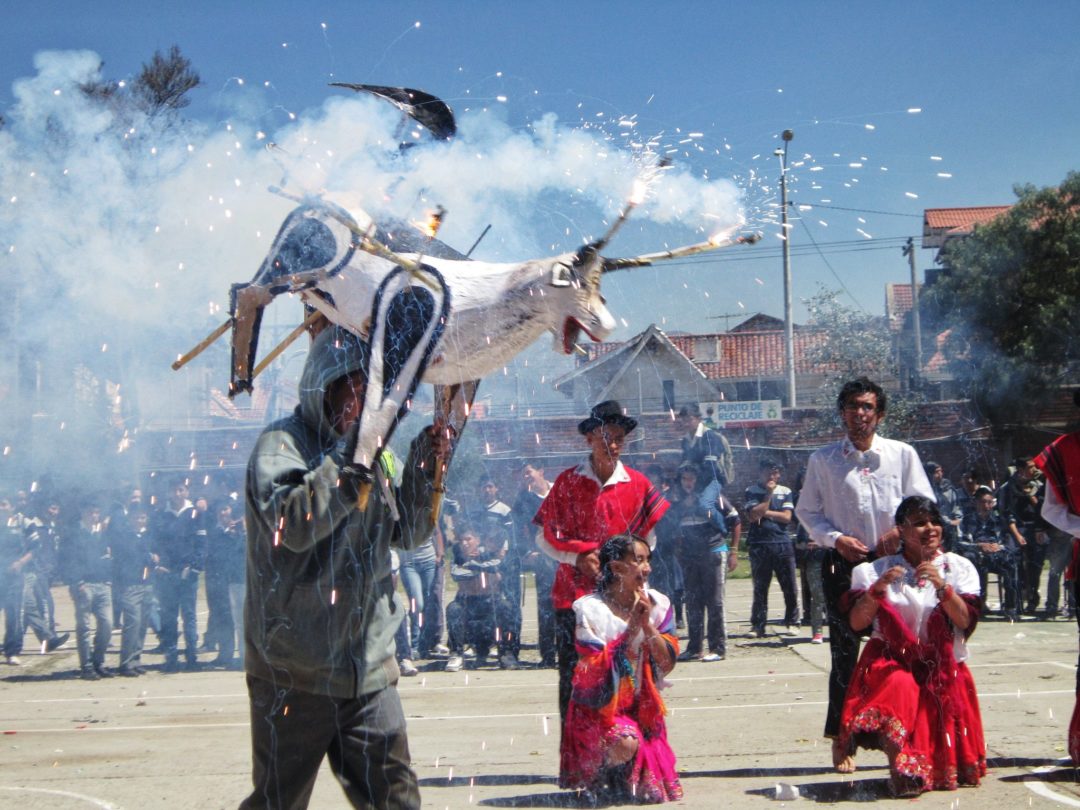










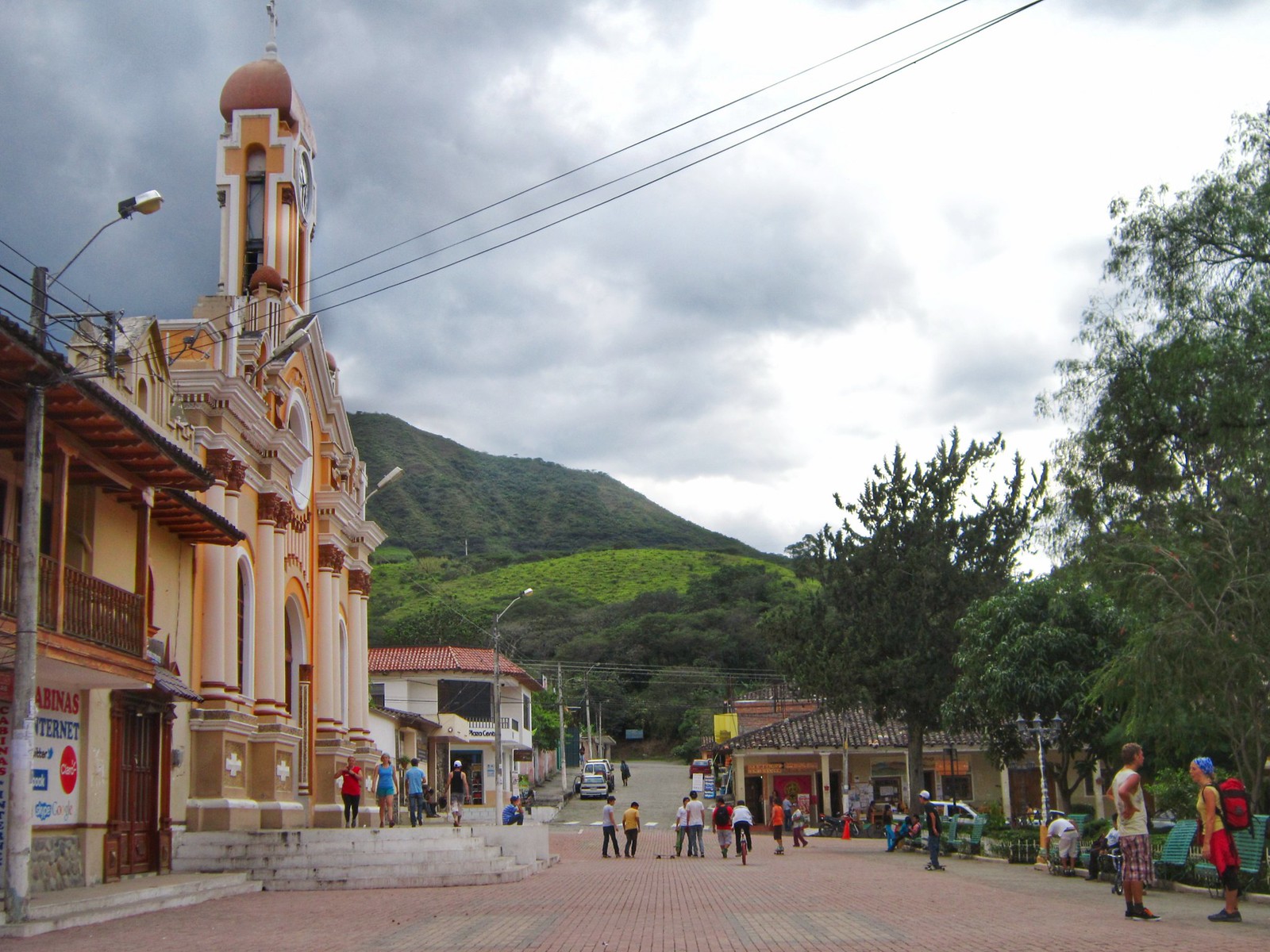


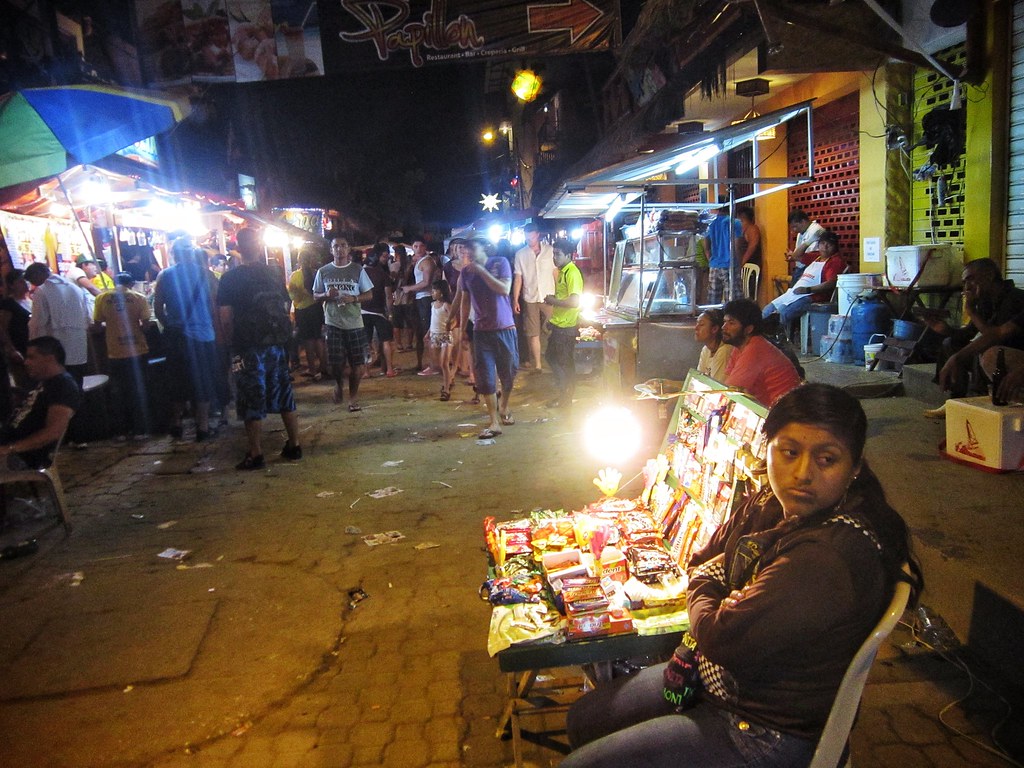

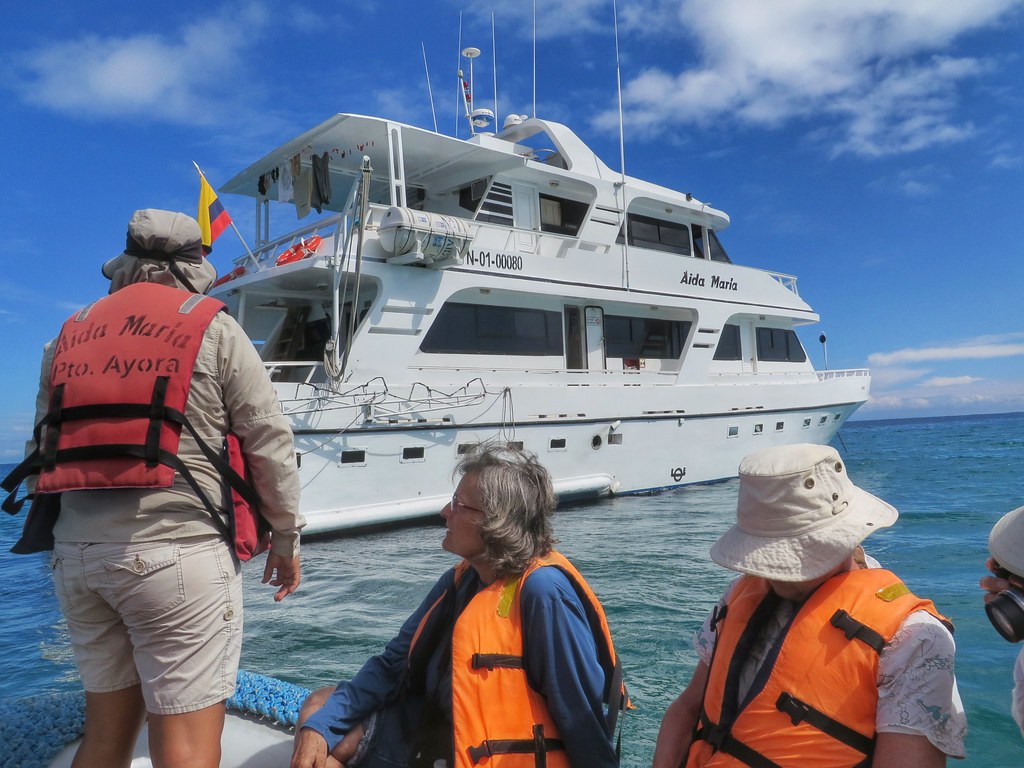



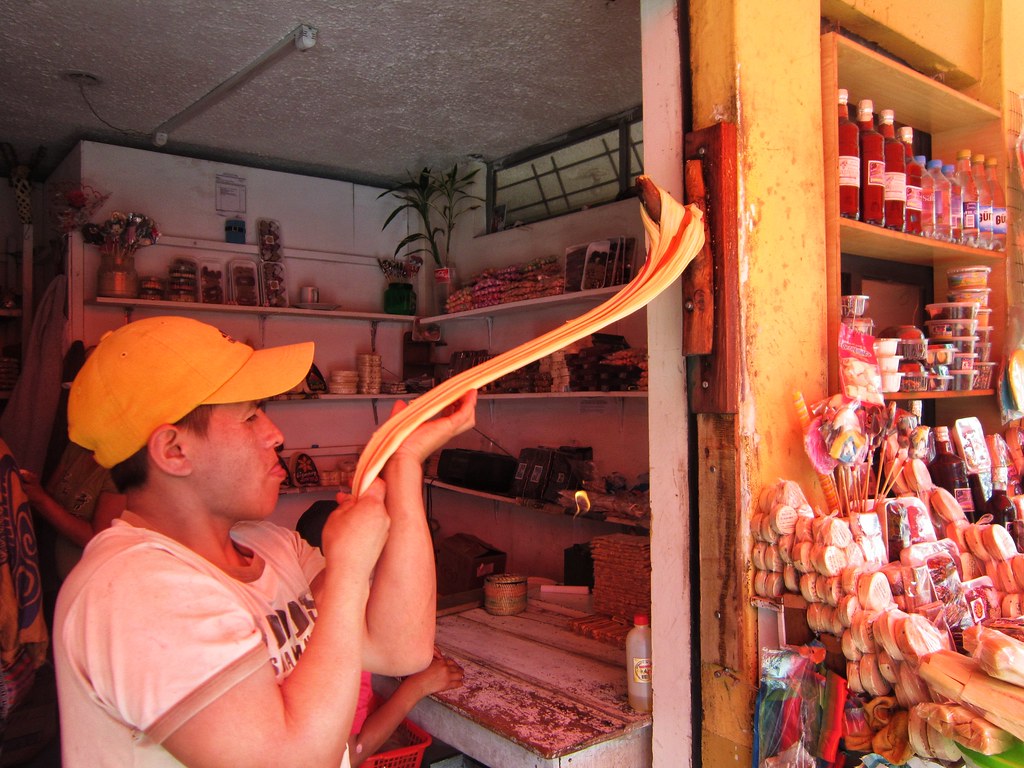

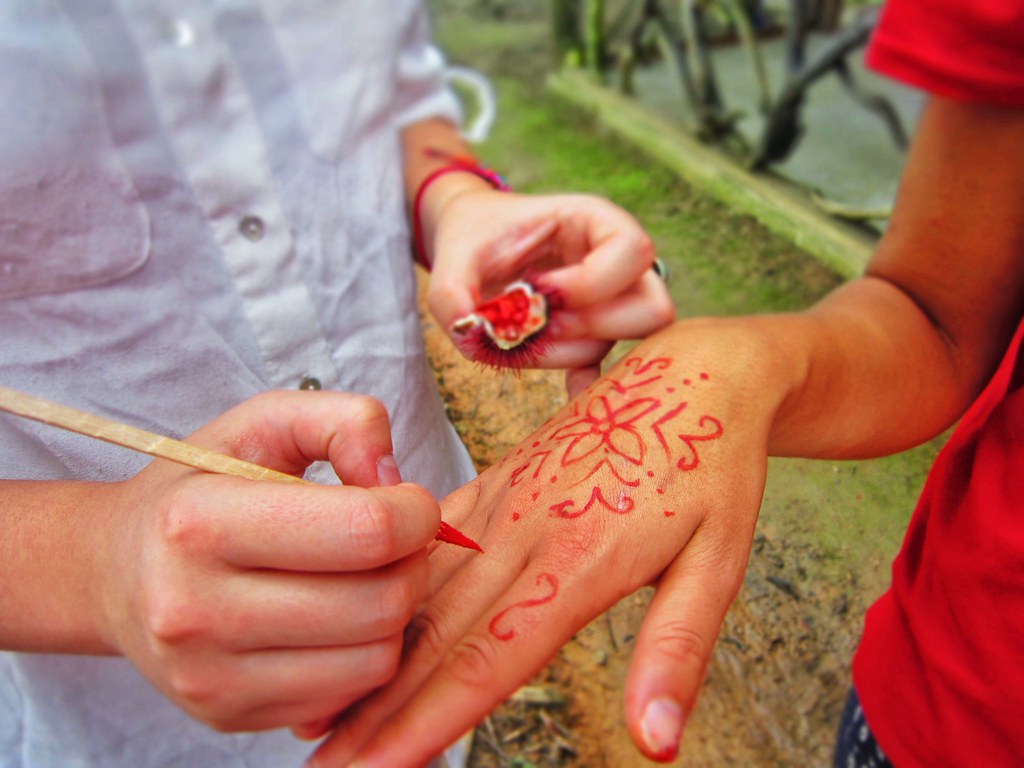



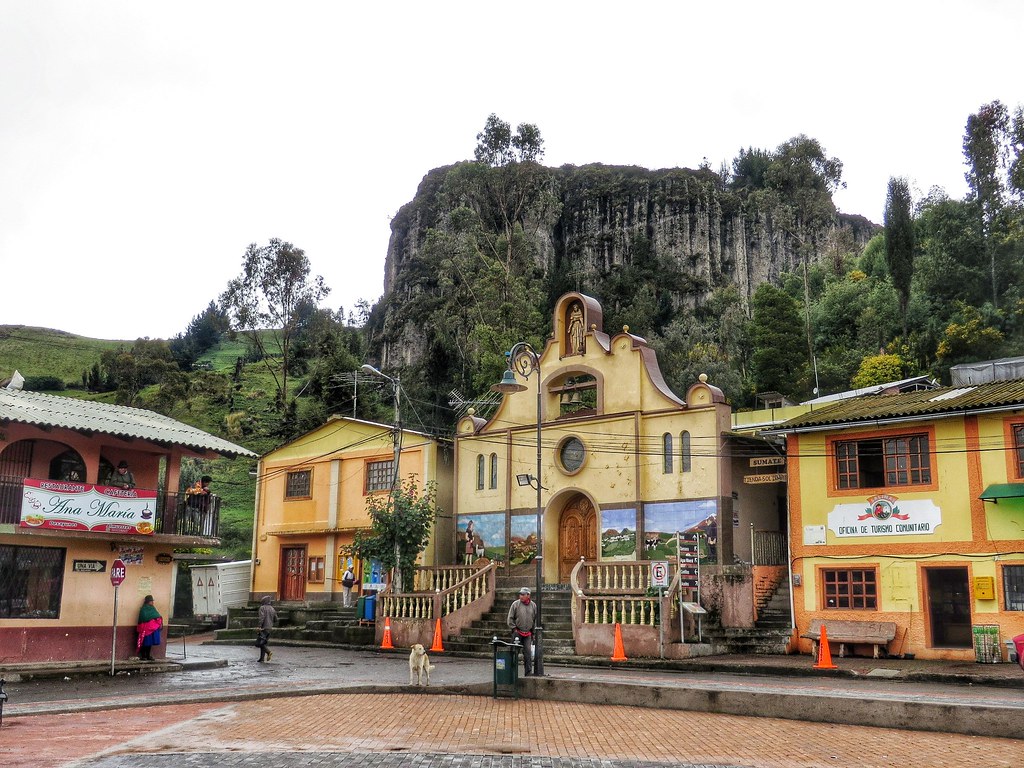
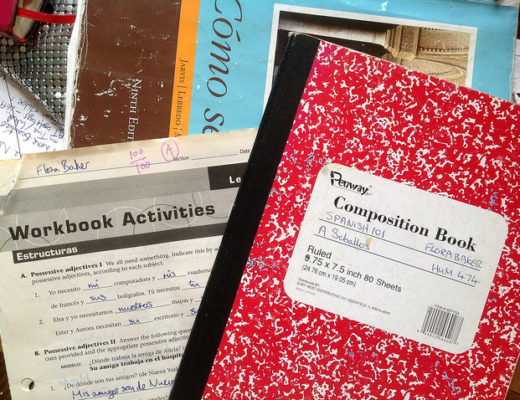
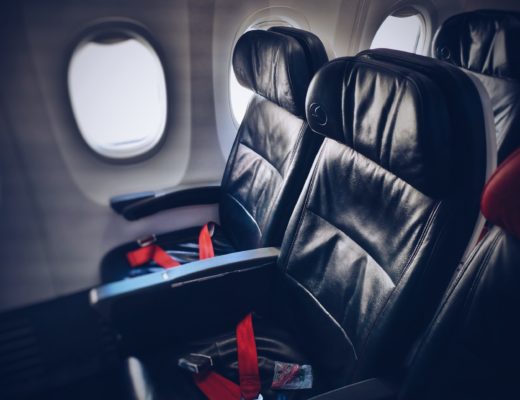
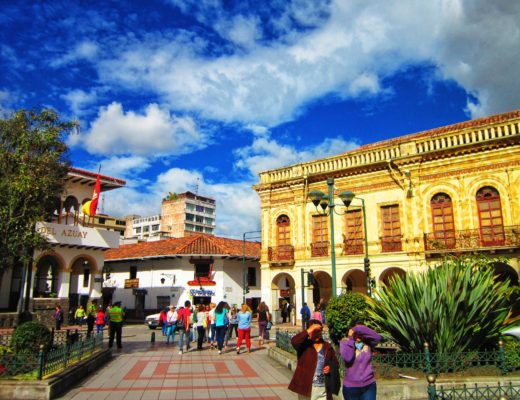
2 Comments
aterosin
June 4, 2019 at 5:53 pmWe’ve been to Ecuador three times. We’re in our mid 60s. Love the country. The best authentic market we came to was on a Thursday in Guamote. High up in the mountains- amazing. Also our best beach place was just north of Montanita at the sombrero hostel. Montanita was a bit too loud for us. It’s definitely a party town. We loved all the places you mentioned in your article. Our latest country to explore is Guatemala. Gerry in Oregon
Signature
June 30, 2019 at 7:11 amTo be honest I love this city and the beaches over there. The people of ecuador is very helpful and you would love to enjoy between them. Twice I have been over there participated in their local festivals, did so many activities and ate the delicious local food. Thanks mate for reminding me everything. You took so many beautiful pictures that refreshed my memories of that places. Now i am looking for another trip to this beautiful city. I really appreciate your work, keep it up.